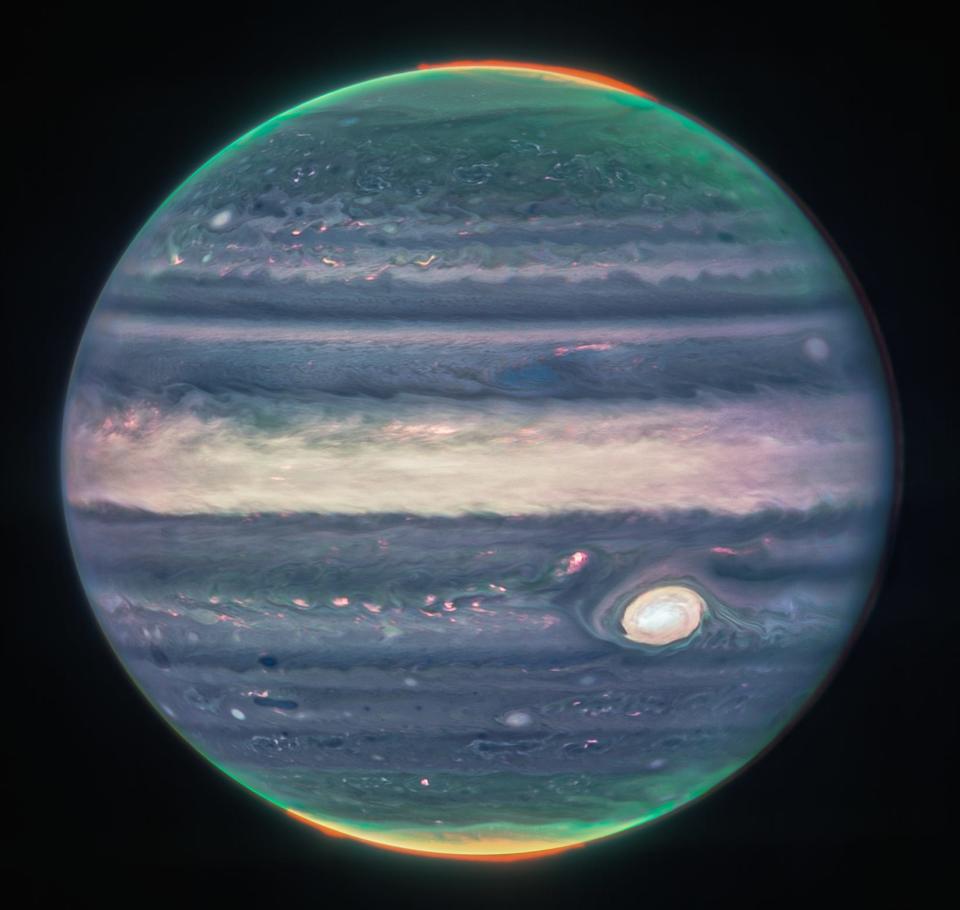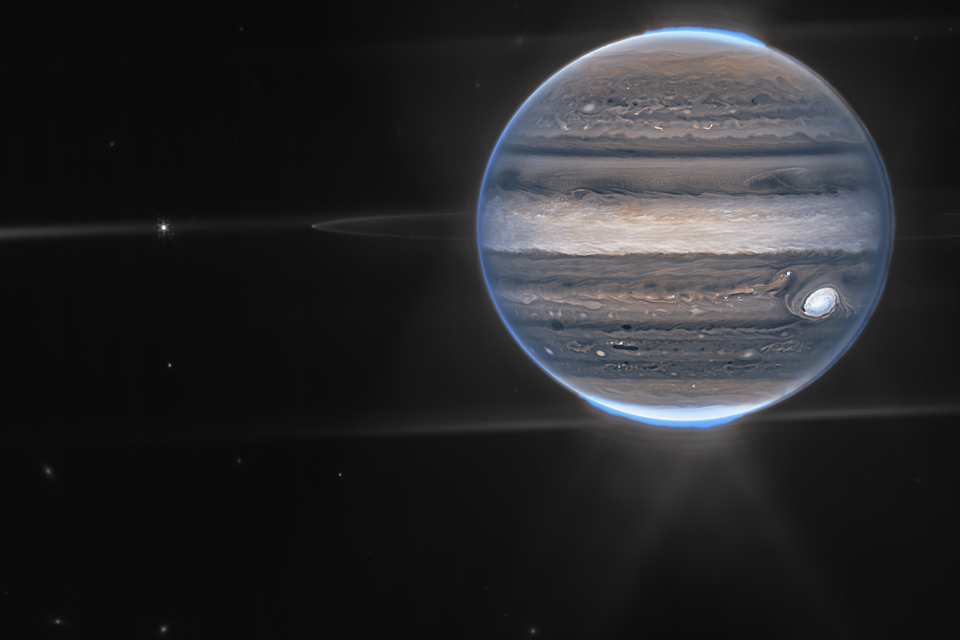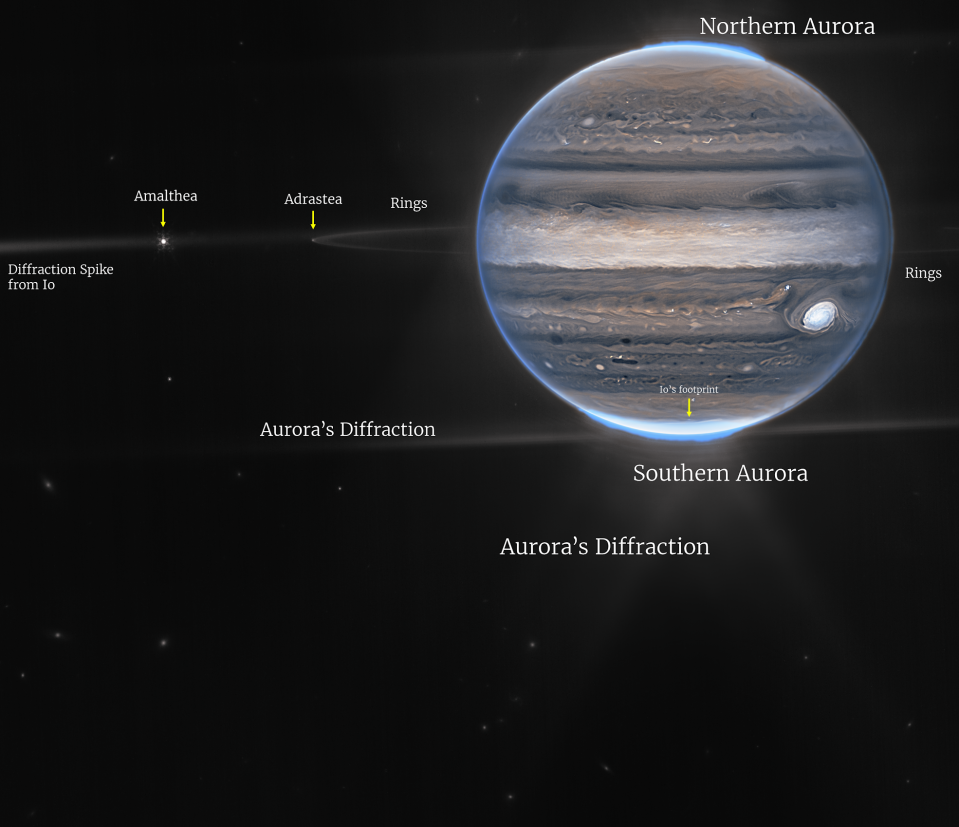Webb Space Telescope Reveals New Out-Of-This-World Look at Jupiter
Auroras, storms, and more spectacular cosmic images of the planet Jupiter have been captured by NASA’s James Webb Space Telescope.
Images of the biggest planet in our solar system were released on Monday and showed stunning details of the gas giant, including its slim rings and Great Red Spot.

“We hadn’t really expected it to be this good, to be honest,” Imke de Pater, a planetary astronomer and professor emerita at the University of California, Berkeley, said in a statement published by NASA. “It’s really remarkable that we can see details on Jupiter together with its rings, tiny satellites, and even galaxies in one image,” she said.

Webb telescope’s near-infrared camera used three infrared filters to capture images that are invisible to the human eye. According to NASA researchers, the infrared filters show auroras extending to high altitudes over the planet’s northern and southern poles. Other infrared filters captured the more red colors of the auroras, showcasing the light reflected from clouds and hazes.
Related: NASA shares James Webb Space Telescope’s first full-color photo
Heidi Hammel is a Webb interdisciplinary scientist for solar system observations as well as the vice president for science at AURA. Touching on the brightness and white spots and streaks captured in the images in NASA’s blog post of the latest photos, Hammel explained how they translate to the measurement of different altitudes.

“The brightness here indicates high altitude — so the Great Red Spot has high-altitude hazes, as does the equatorial region,” Hammel explained. “The numerous bright white ‘spots’ and ‘streaks’ are likely very high-altitude cloud tops of condensed convective storms.”
NASA’s James Webb Space Telescope was developed by thousands of scientists over three decades. It was launched into space on Dec. 25, 2021 with the effort to explore the first stars, the formation of new galaxies, and potentially discover habitable planets.

